Fine Piercing of Amorphous Electrical Steel Sheet Stack by Micro-/Nano-Textured Punch
Abstract
:1. Introduction
2. Materials and Methods
2.1. Stamping Procedure
2.2. Tooling Conditions
2.3. Work Materials
2.4. Characterization of the Pierced Works
3. Experimental Results
SEM Analysis on the Affected Zones
4. Discussion
5. Conclusions
Author Contributions
Funding
Institutional Review Board Statement
Informed Consent Statement
Data Availability Statement
Acknowledgments
Conflicts of Interest
References
- Enomoto, Y.; Soma, K. Development of the amorphous motor balancing both resource saving and energy saving. J. Soc. Mech. Eng. 2014, 117, 753–756. [Google Scholar]
- Amano, H.; Enomoto, Y.; Ito, M.; Itabashi, H.; Tanigawa, S.; Masaki, R. Examination of Applying Amorphous Rolled Core to Permanent Magnet Synchronous Motors. IEEJ Trans. IA 2010, 130, 632–638. [Google Scholar] [CrossRef]
- Hitachi Metals. News Release. 24 October 2018. Available online: https://www.hitachi-metals.co.jp/e/press/pdf/2018/20181024en.pdf (accessed on 4 January 2021).
- Senda, K.; Ishida, M.; Nakasu, Y.; Yagi, M. Effects of shearing process on iron loss and domain structure of non-oriented Electrical Steel. IEEJ Trans. FM 2005, 125, 241–246. [Google Scholar] [CrossRef] [Green Version]
- Aoki, I.; Suzuki, K.; Nakagawa, T. Shearing Characteristics of Amorphous Alloy Foils. J. JSTEP 1986, 27, 860–867. [Google Scholar]
- Koga, N.; Okada, S.; Yamaguchi, T. Effect of various blanking conditions on properties of cut surface of amorphous alloy foil and tool life. J. JSTP 2018, 59, 176–180. [Google Scholar] [CrossRef] [Green Version]
- Koga, N.; Ikushima, A.; Yamaguchi, T. Precision shearing using zero-clearance dies equipped with polycrystalline diamond tools. J. JSTP 2016, 57, 41–46. [Google Scholar] [CrossRef] [Green Version]
- Takahashi, M.; Murakoshi, Y.; Sano, T.; Matsuno, K. Stacked punching of amorphous alloy foil. In Proceedings of the 40th Japanese Joint Conference for Technology of Plasticity, Ehime, Japan, 16–18 October 1989; pp. 531–534. [Google Scholar]
- Aizawa, T.; Shiratori, T.; Kira, Y.; Inohara, T. Femtosecond laser trimming with simultaneous nanostructuring to fine piercing punch to amorphous electrical steel sheets. Appl. Sci. 2020, 10, 2674. [Google Scholar] [CrossRef]
- Shiratori, T.; Yoshino, T.; Suzuki, Y.; Nakano, S.; Yang, M. Effects of iron processing of cutting edge of tools on tool wear and punching characteristics in micropunching Process. J. JSTP 2019, 60, 58–63. [Google Scholar] [CrossRef]
- Shiratori, T.; Yoshino, T.; Aihara, T.; Suzuki, Y.; Nakano, S.; Yang, M. Effects of nanometric control in tool cutting edge sharpness on micropunching of austenitic stainless steel SUS304. J. JSTP 2020, 61, 147–153. [Google Scholar] [CrossRef]
- Aizawa, T.; Shiratori, T.; Yoshino, T.; Inohara, T. Femtosecond laser trimming of CVD-diamond coated punch for fine embossing. Mater. Trans. 2020, 61, 244–250. [Google Scholar] [CrossRef]
- Katsuta, E.; Aizawa, T.; Dohda, K.; Yoshihara, S. Fabrication of lower temperature plasma-nitrided die and development of zero clearance piercing of electromagnetic steel sheets. J. JSTP 2019, 60, 70–74. [Google Scholar] [CrossRef]
- Aizawa, T.; Shiratori, T.; Kira, Y.; Yoshino, T.; Suzuki, Y. Simultaneous Nano-texturing onto a CVD-diamond coated piercing punch with femtosecond laser trimming. Micromachines 2021, 12, 568. [Google Scholar] [CrossRef] [PubMed]
- Ishiguro, T.; Yoshida, Y.; Yukawa, N.; Ishikawa, T. Deformation Analysis of Shearing Process Using Results of Notched Round Bar Tension Test. Mater. Trans. 2009, 50, 1671–1677. [Google Scholar] [CrossRef] [Green Version]
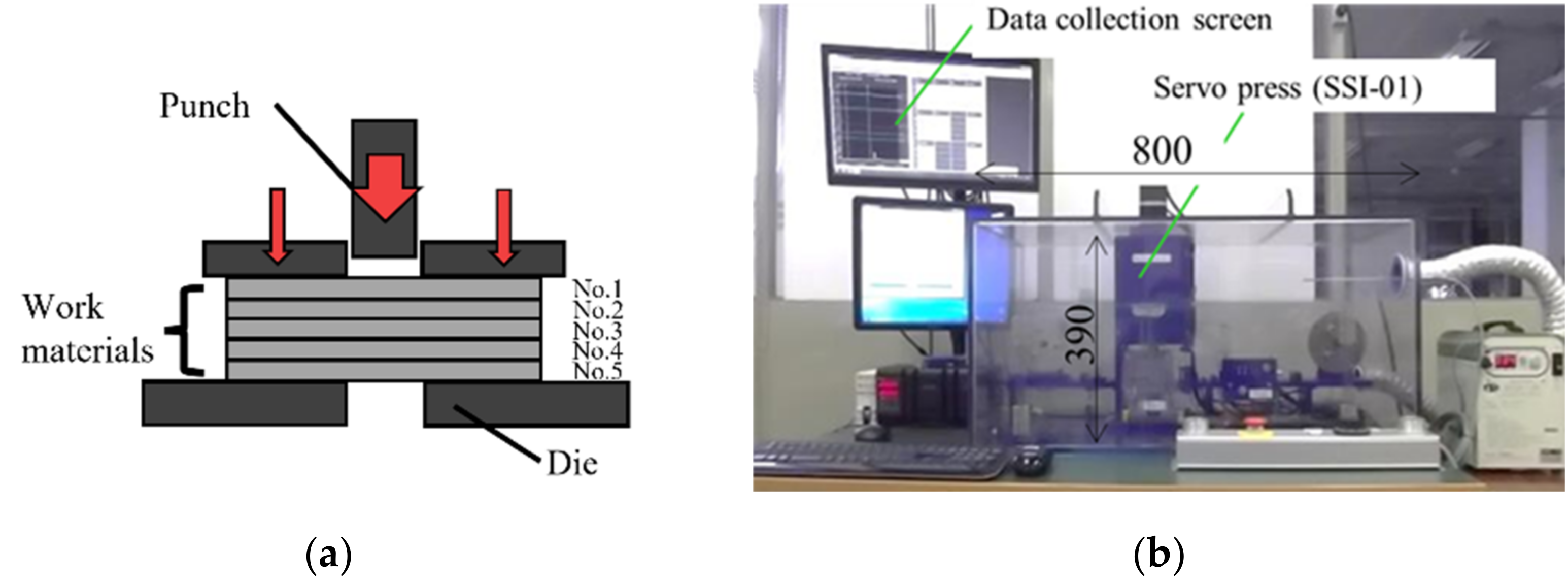
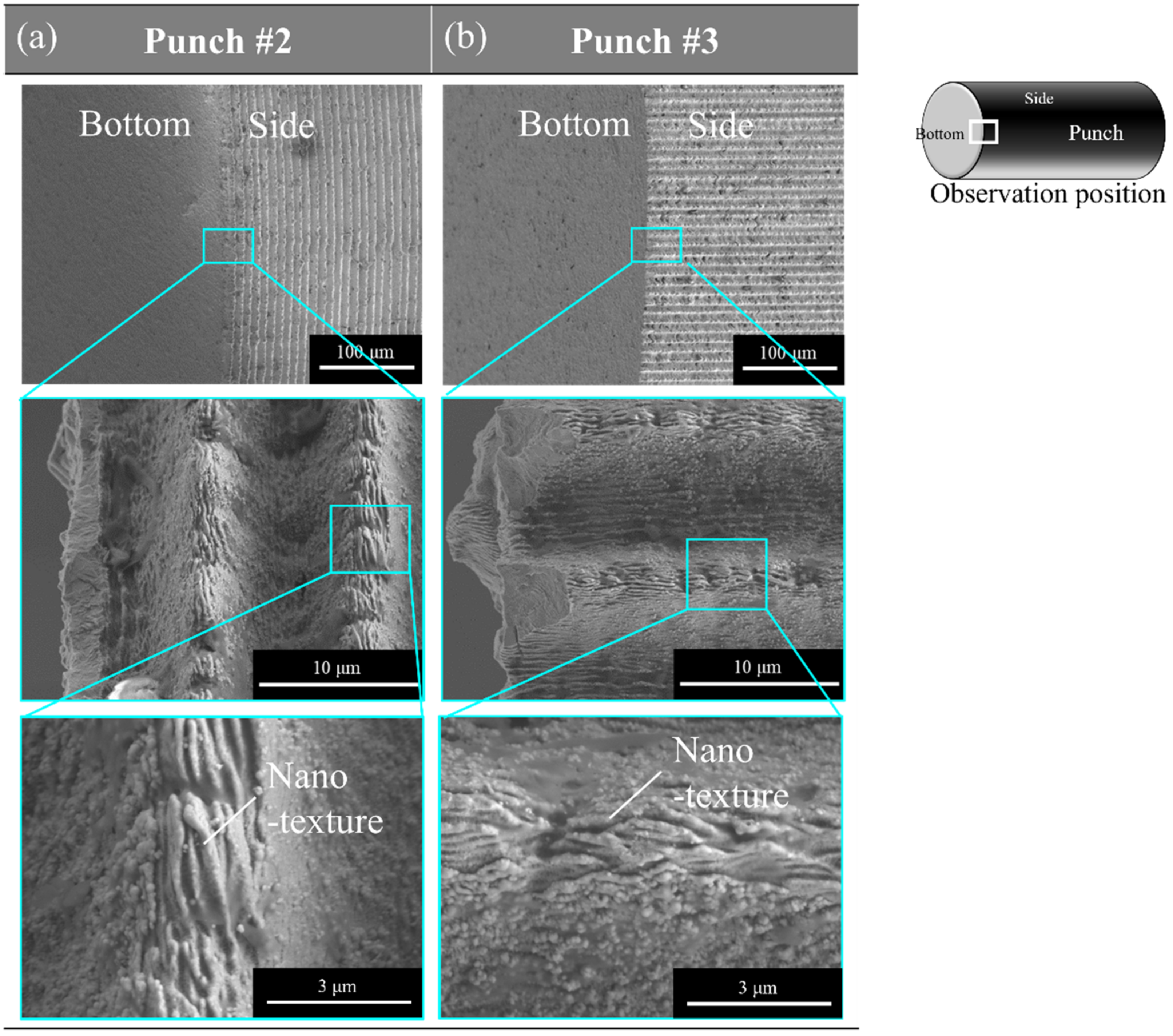
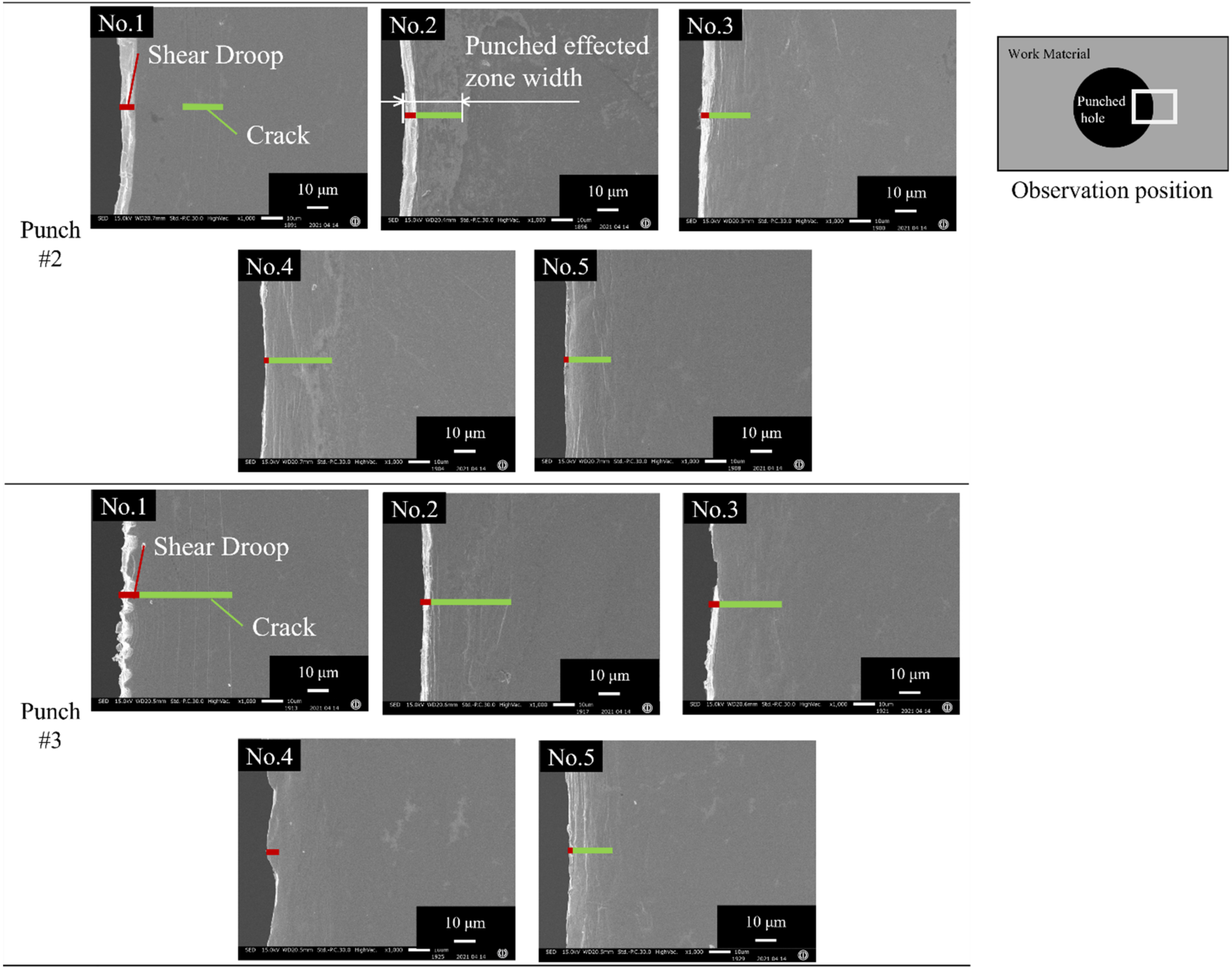

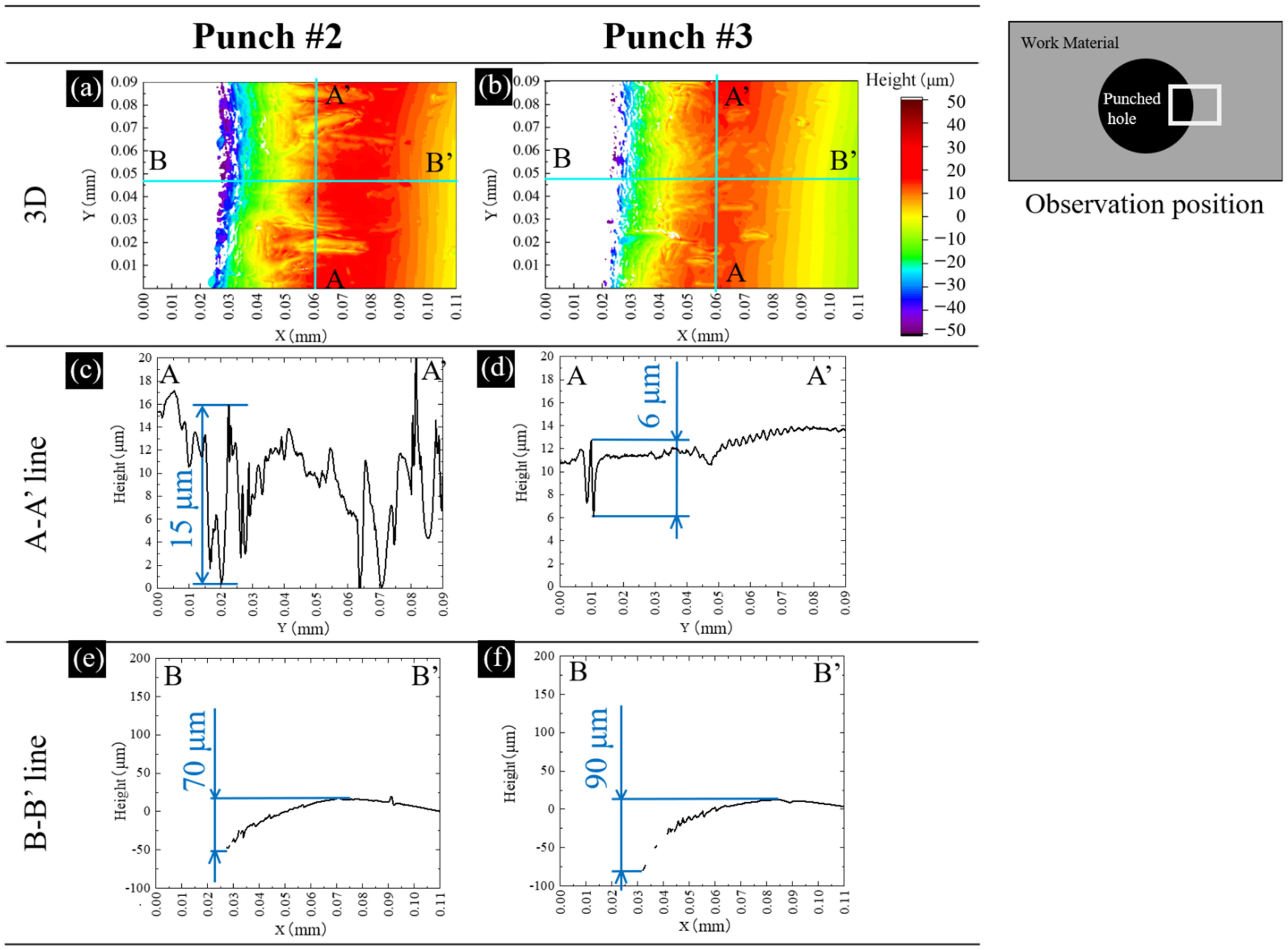
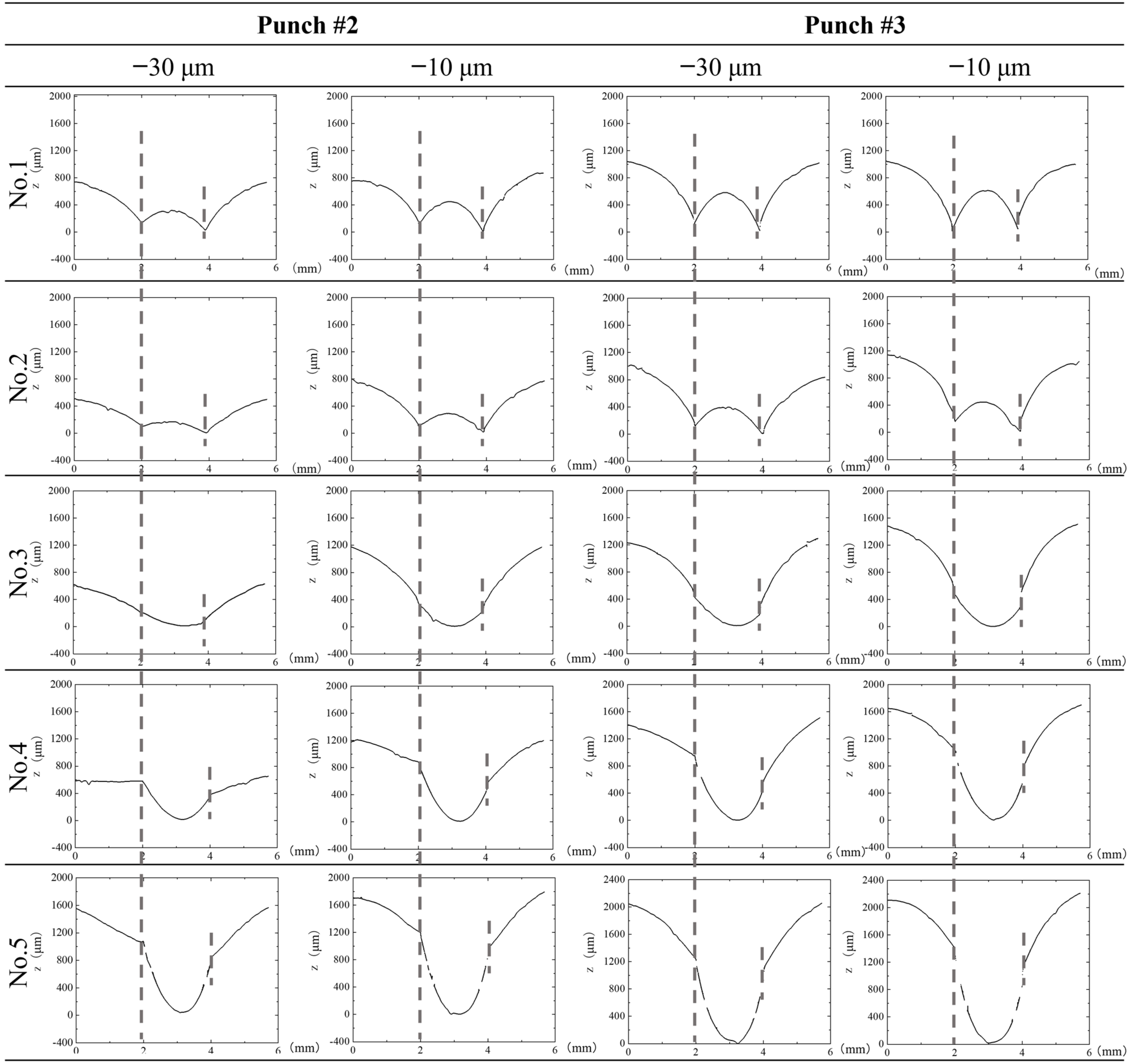
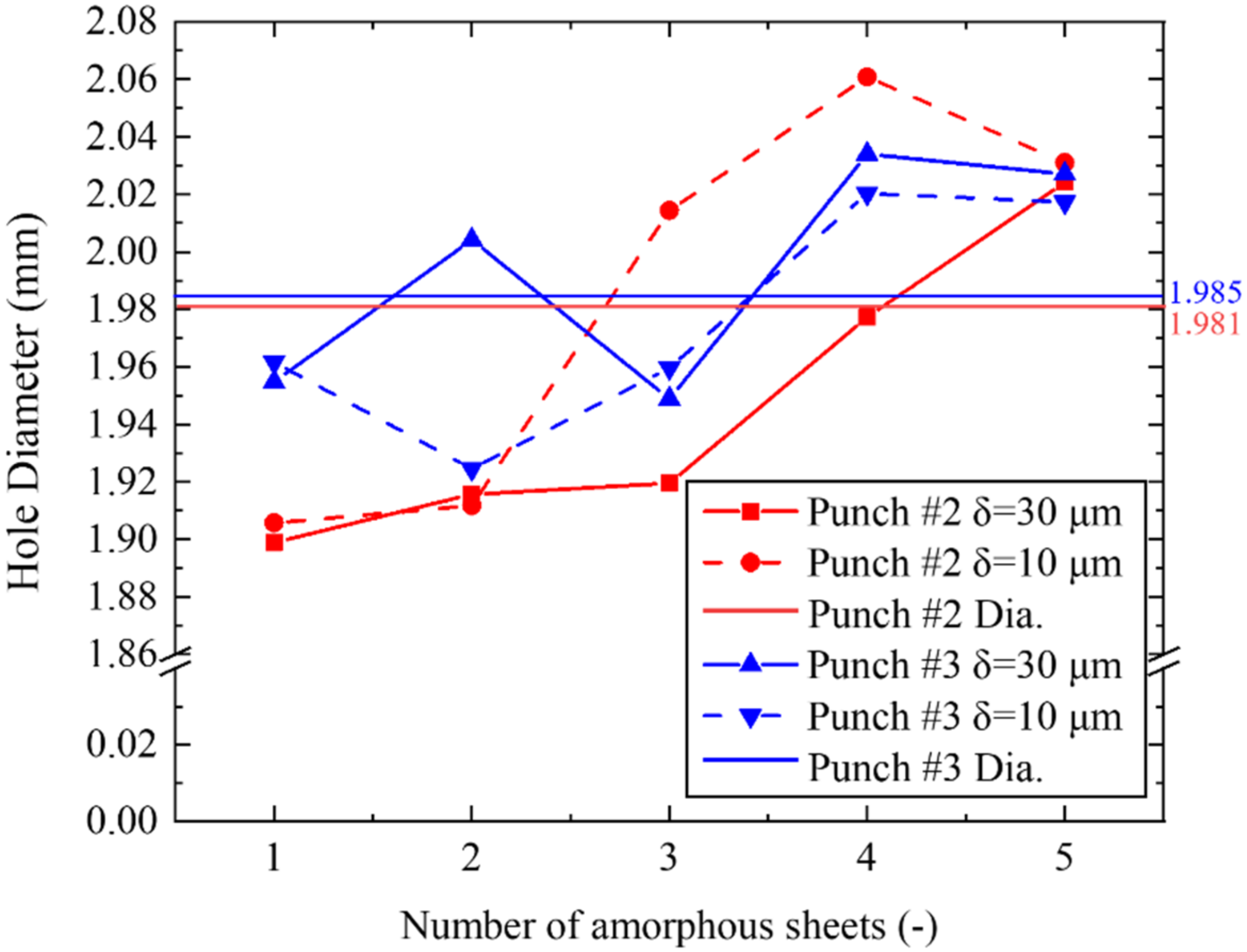
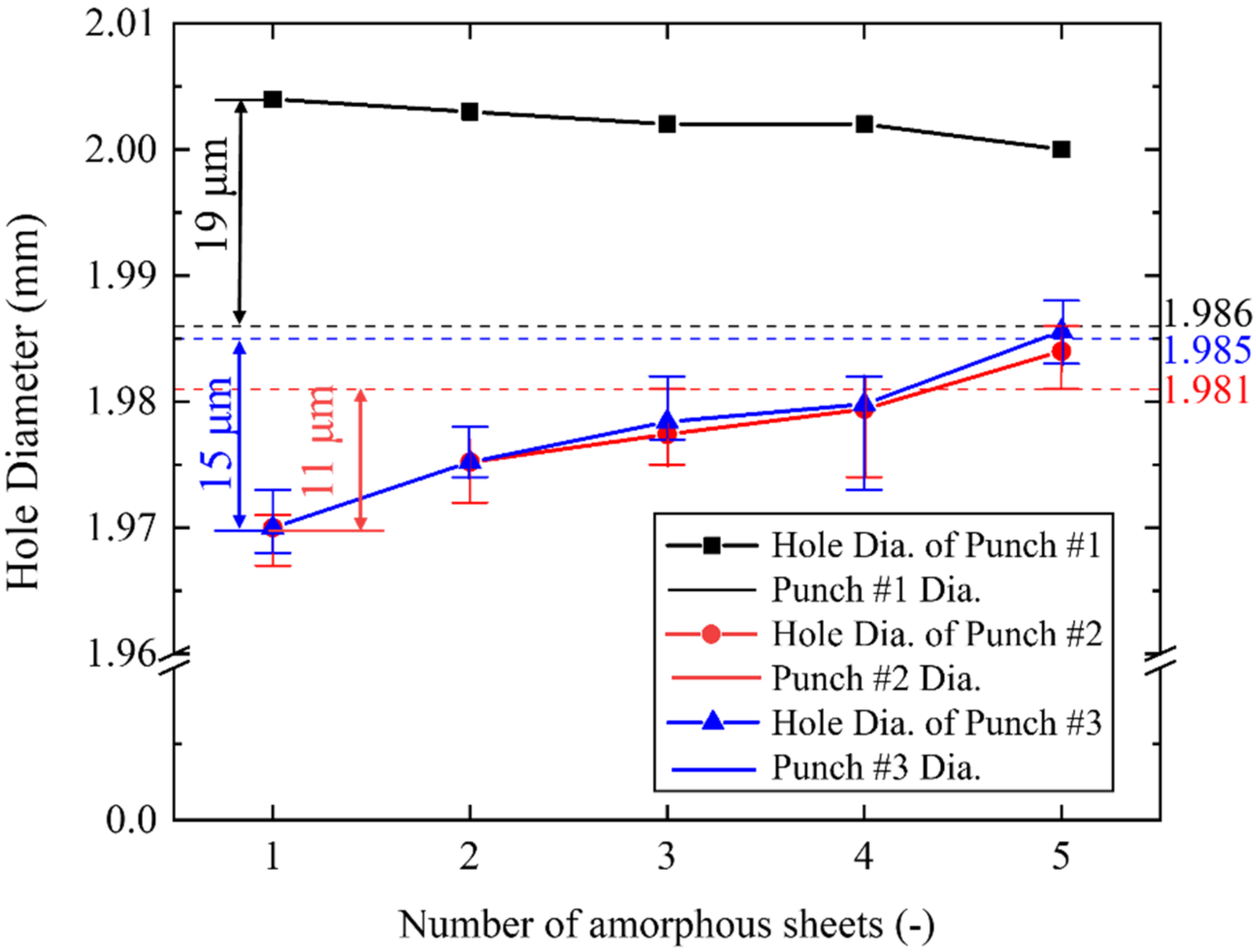
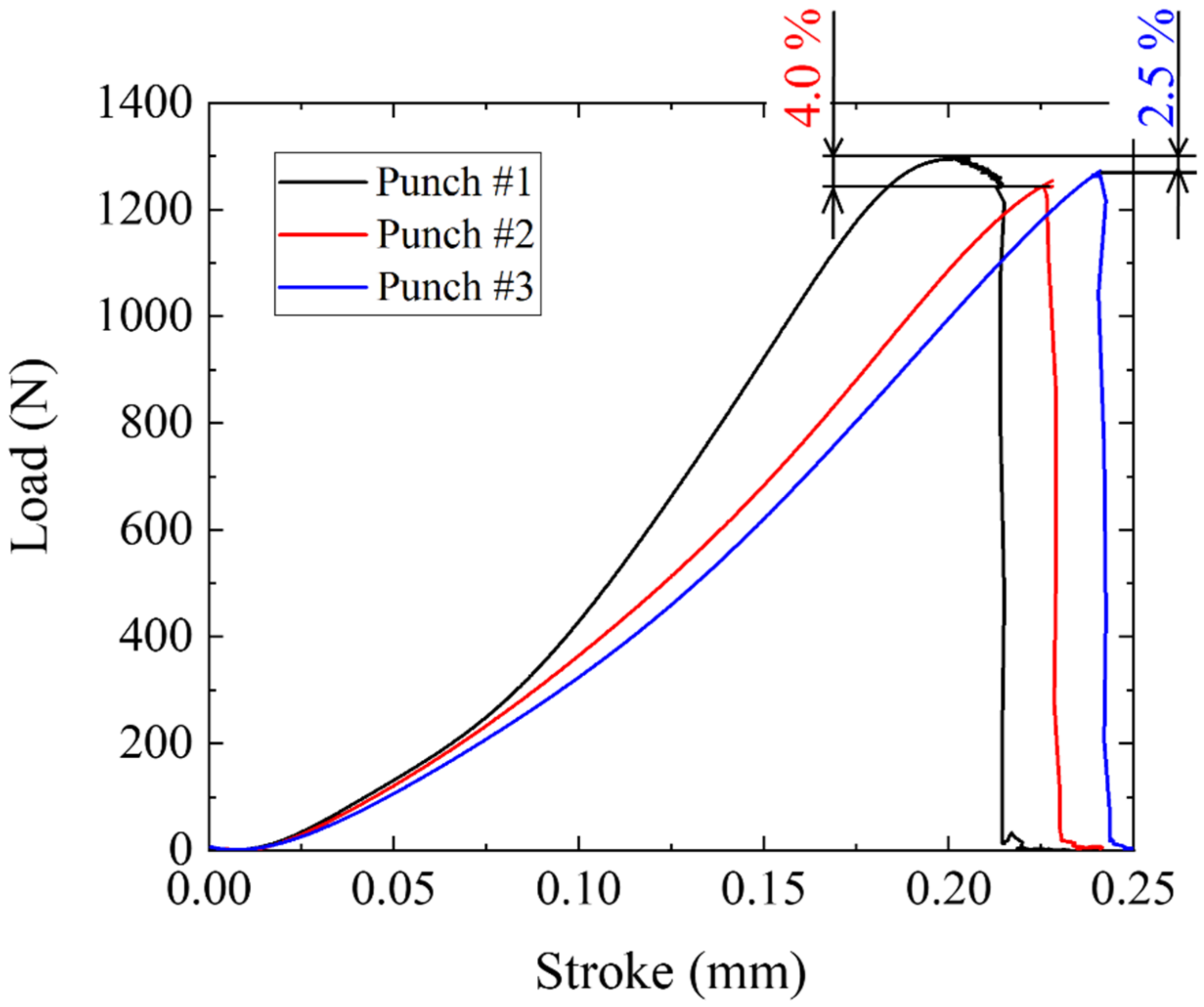

| Punch #1 | Punch #2 | Punch #3 | |
|---|---|---|---|
| Punch Diameter (mm) | 1.986 | 1.981 | 1.985 |
| Die Inner Diameter (mm) | 2.002 | 2.003 | 2.004 |
| Clearance (μm) | 8.0 | 11.0 | 9.5 |
Publisher’s Note: MDPI stays neutral with regard to jurisdictional claims in published maps and institutional affiliations. |
© 2022 by the authors. Licensee MDPI, Basel, Switzerland. This article is an open access article distributed under the terms and conditions of the Creative Commons Attribution (CC BY) license (https://creativecommons.org/licenses/by/4.0/).
Share and Cite
Komori, Y.; Suzuki, Y.; Abe, K.; Aizawa, T.; Shiratori, T. Fine Piercing of Amorphous Electrical Steel Sheet Stack by Micro-/Nano-Textured Punch. Materials 2022, 15, 1682. https://doi.org/10.3390/ma15051682
Komori Y, Suzuki Y, Abe K, Aizawa T, Shiratori T. Fine Piercing of Amorphous Electrical Steel Sheet Stack by Micro-/Nano-Textured Punch. Materials. 2022; 15(5):1682. https://doi.org/10.3390/ma15051682
Chicago/Turabian StyleKomori, Yukiya, Yohei Suzuki, Kohta Abe, Tatsuhiko Aizawa, and Tomomi Shiratori. 2022. "Fine Piercing of Amorphous Electrical Steel Sheet Stack by Micro-/Nano-Textured Punch" Materials 15, no. 5: 1682. https://doi.org/10.3390/ma15051682
APA StyleKomori, Y., Suzuki, Y., Abe, K., Aizawa, T., & Shiratori, T. (2022). Fine Piercing of Amorphous Electrical Steel Sheet Stack by Micro-/Nano-Textured Punch. Materials, 15(5), 1682. https://doi.org/10.3390/ma15051682






